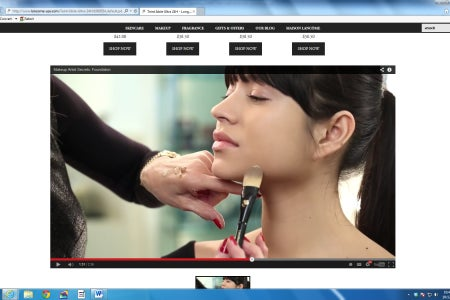SEO for Success in Video Marketing

With the ever-increasing number of marketing tools, channels, and platforms, it can be difficult for even sophisticated businesses to determine how best to allocate funds within their marketing budgets. I sometimes pause to consider that it wasn’t so very long ago that hard copy telephone books were the major vehicle by which businesses were visible to their customers. Our present-day complexity, however, also brings with it the benefit of many choices; the challenge is to choose wisely to suit your customers’ expectations.
Video is increasingly becoming a crucial component of many marketing strategies, but for this to translate to customer conversion, a number of factors need to be considered. Let’s start with some statistics.
Video Statistics
Video statistics released by Invodo for 2014 provide insights useful for businesses of all sizes. Notably, this report summarizes data from a number of major industry sources, thus increasing confidence and reliability. Some of the major points which have garnered attention in the C suite are:
- Shoppers who view video are 1.81 times more likely to purchase than non-viewers
- 51.9 percent of marketing professionals worldwide name video as the type of content with the best ROI
- Retailers cite 40 percent increases in purchases as a result of video
- In an eye-mapping study of search engine results pages (SERPs), video results commanded more attention than other listings
- 64 percent of people in the US own a smartphone
- Mobile shoppers are 3 times as likely to view a video than desktop shoppers
- 57 percent of smartphone owners watch product video in stores
Delving into the Numbers
These statistics provide a variety of insights. Particularly, they demonstrate the customer’s desire for education before making a purchase. Recognizing that customers will view a product video while being physically located in the store reveals the customer’s goal of making an informed decision, and having done so, is more likely to be satisfied and less likely to return a product.
The gravitation toward video and increased conversion also provides insight into how humans process information. We’ve long heard that “a picture is worth a thousand words,” and more recently, James McQuivey, Ph.D. of Forrester research has told us that a one-minute video is worth 1.8 million words.
Yet interestingly, Frederick Phillips Brooks Jr., computer scientist, software engineer, and author seems to be less engaged by pictures, having written: “Show me your flowcharts and conceal your tables, and I shall continue to be mystified. Show me your tables, and I won’t usually need your flowcharts; they’ll be obvious.”
So here is a major lesson to be learned: Some of your customers might still prefer text as they may be speed readers, they may be among those who learn more effectively from reading, moreover, The World Federation of the Deaf reports that there are 70 million people globally who are deaf.
The visual learners may be in the majority, but you don’t want to leave out the rest. You may consider accompanying your phenomenal video with text on screen or in PDF format.
SEO and Video Marketing
SEO has grown significantly in scope over the past nearly two decades and is critical to the visibility of products and services. No longer are search engines merely like glorified phone books, providing addresses and matching keywords. Search engines have devised algorithms in an attempt to divine what a searcher may want, based upon such factors as past searches, preferences and geolocation. Maintaining your relevancy to your customers and optimizing across a range of platforms is an ongoing challenge. Let’s look at some tips and best practices for getting the most out of your video marketing dollars.
Video Marketing for Impact
We’ve seen from the statistics and reports that consumers wish to be informed and that this is best for the buyer and seller for many reasons. The buyer is pleased, is less likely to return an item, which is good for the seller, and a trusted relationship has been established, which is good for both. From this we can discern that videos which are educational and informative are most useful to your customer, whether B2C or B2B.
Among the videos most likely to have a positive impact on ROI are:
- “How-to” or instructional videos. These help to reassure your customer that he or she will be able to successfully use or install your product
- Product demonstration videos. Your customer will be able to successfully use your product
- Explainer videos. These explain a concept, product or service in an entertaining manner, utilizing a variety of styles, such as animation or live action.
- Interviews with experts: these help establish your credibility and authority in your area of business
All of the above have the effect of increasing confidence in making a purchase.
- Conference and presentation videos: these work well for B2B, not-for profits and educational organizations, establishing your credibility and authority in your field
Depending upon the goal of your organization, the above can have the effect of increasing new business for paid conferences or increased donations for charities, not-for-profits and educational institutions.
Let’s look at just a few examples of marketing videos from very diverse companies:
A product demo of a very technical item, a 1-Wire thermocouple-to-digital converter

http://blogs.adobe.com/digitalmarketing/wp-content/uploads/2015/04/Lloyd891.png
An instructional video for installing a metal ceiling

http://blogs.adobe.com/digitalmarketing/wp-content/uploads/2015/04/Lloyd892.png
An instructional video for choosing high fashion make-up

http://blogs.adobe.com/digitalmarketing/wp-content/uploads/2015/04/Lloyd893.png
Marketing videos can be an exceptional method to engage your clients, the key is to choose an appealing format and to optimize for visibility across a range of platforms. Successful techniques will vary across industries. I welcome your comments.